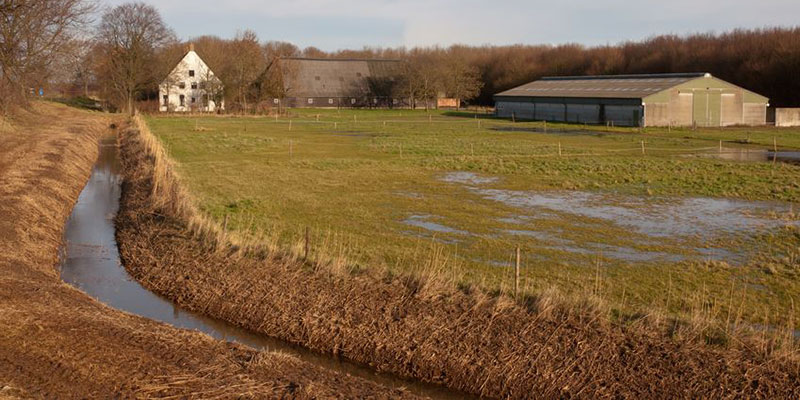In Europe, a favored method of anaerobic digestion sludge management is reuse as organic fertilizer.
This byproduct of anaerobic digestion is fertilizing fields and helping divert waste from landfills
Anaerobic digestion (AD) is an important waste-to-energy technology that harvests energy — in the form of biogas — from organic pollutants in wastewater and solid waste.
Anaerobic digestion is ideal for challenging wastewater streams that might cause significant public health risk if treated inadequately. For instance, Fluence added AD to the wastewater treatment system at a major Italian poultry processing plant that was increasing production and had to comply with strict discharge limits. Using AD converted the high COD and nutrient load of the plant’s wastewater into biogas, digestate, and effluent that complies with all discharge regulations.
The AD process produces concentrated digestate sludge as a byproduct, and reusing the sludge is an important part of complying with the European Union’s Directive on the Landfill of Waste and the “end-of-waste” policy in Europe.
Sludge is a byproduct of many types of wastewater treatment, and there are many methods for dealing with it, including further aerobic treatment and mechanical dewatering. But anaerobic digestion is the dominant stabilization method for sludge in 24 EU nations and it already is an important process in Europe’s budding circular economy because it can recover more energy than needed for the treatment process.
A popular method for sludge management is reusing the sludge as organic fertilizer. It is usually produced by composting denser materials or using digestion for organic matter with high water content. Sometimes post-treatment is used.
Treatment and Processing of Anaerobic Digestate
Anaerobic digestate starts as a high-ammonium nitrogen liquid, which is a quick-acting fertilizer that contributes to soil nitrogen reserves. This is the most popular use for liquid digestate from biogas plants, but further treatment with physical, chemical, and biological processes is often done for a variety of purposes, including:
- Controlling cost of application
- Removal of liquid to facilitate transportation and storage
- Production of compost
- Lowering nutrient content of liquid digestate
- Avoidance of atmospheric pollutant discharge and decomposition of odor-causing materials
- Neutralization of pathogens and weed seeds
Post-treatment of liquid digestate usually begins with separation of solids and liquids, with the solids and liquids sometimes applied to fields without further processing. But digestate can move on to further drying, composting, or pelletizing for enhanced marketability, requiring a sequence of mechanical operations, each of which tends to increase cost.
The liquid version is the most economical application method, but where there is a market for easily transported nutrients or the local area’s soil is already nutrient rich, upgrading digestate could make sense.
Challenges of Using Sludge as Fertilizer
Agricultural reuse of sludge as fertilizer has some unique challenges. It is sensitive to seasonal cycles because sludge is produced year-round, while fertilizer is applied only once or twice a year. Sometimes silos are used to compost and store sludge solids until needed.
Much research has been conducted on the risks of using sludge for fertilizer, which include the release of heavy metals, organic pollutants, excess nitrogen, pathogens, and unpleasant odors. Strict control of toxins is necessary, as well as a full hygiene assessment, and an assessment of nitrogen release versus root uptake and the capacity of soil to hold nutrients in place.
All in all, a growing body of evidence demonstrates that most digestate-based fertilizers pose no danger to health.
At Fluence, we’re proud of our many anaerobic digestion systems throughout Europe, which are contributing to end-of-waste goals and promoting cleaner water. Contact our experts to explore the value hidden in your wastewater stream.

